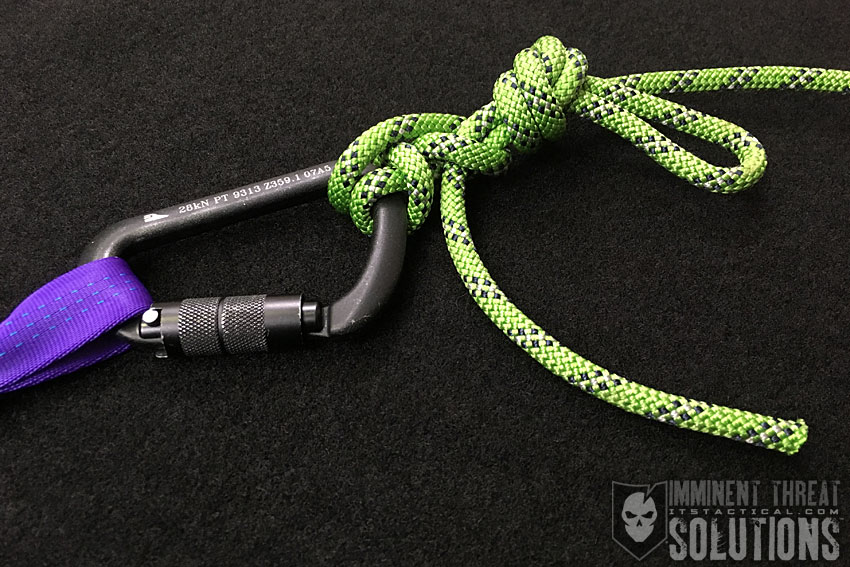
On today’s Knot of the Week I’ll be covering the Munter Mule, which may look like an amorphous blob, but I assure you it’s a very handy knot to know. Using a base of the Munter Hitch, the Munter Mule is a quick way to tie off the Munter to go hands free during belaying or lowering operations.
Why would this be needed? Because the Munter isn’t auto-locking, meaning that if you let go of the break hand, that’s it. For this reason, it’s imperative to keep tension on the brake hand side of the line when tying and untying the Munter Mule. In the video below, I go through both tying and untying the Munter Mule to go back into a belay, etc.
Don’t forget that a key piece to the Munter’s success is a good pear shaped carabiner.
Munter Mule » Climbing Knots
(Strength: 4/Secure: 4/Stability: 4/Difficulty: 4) See below for what these ratings mean.
Ratings
Strength/Security/Stability/Difficulty
Each knot will be assigned a rating from 1-5 (1 representing the lowest score) based on the following four properties:
Strength – All knots will weaken the strength of a rope, however, there are knots that are stronger than others. The scale here will reflect how strong the rope remains with the specified knot.
Security – The security scale refers to how well the knot will stay tied, and resist coming loose under a normal load.
Stability – Stability refers to how easily the knot will come untied under an abnormal load (i.e. the knot being pulled in a direction it was not intended to) A lower score here represents instability.
Difficulty – The lower the number, the easier a knot is to tie.